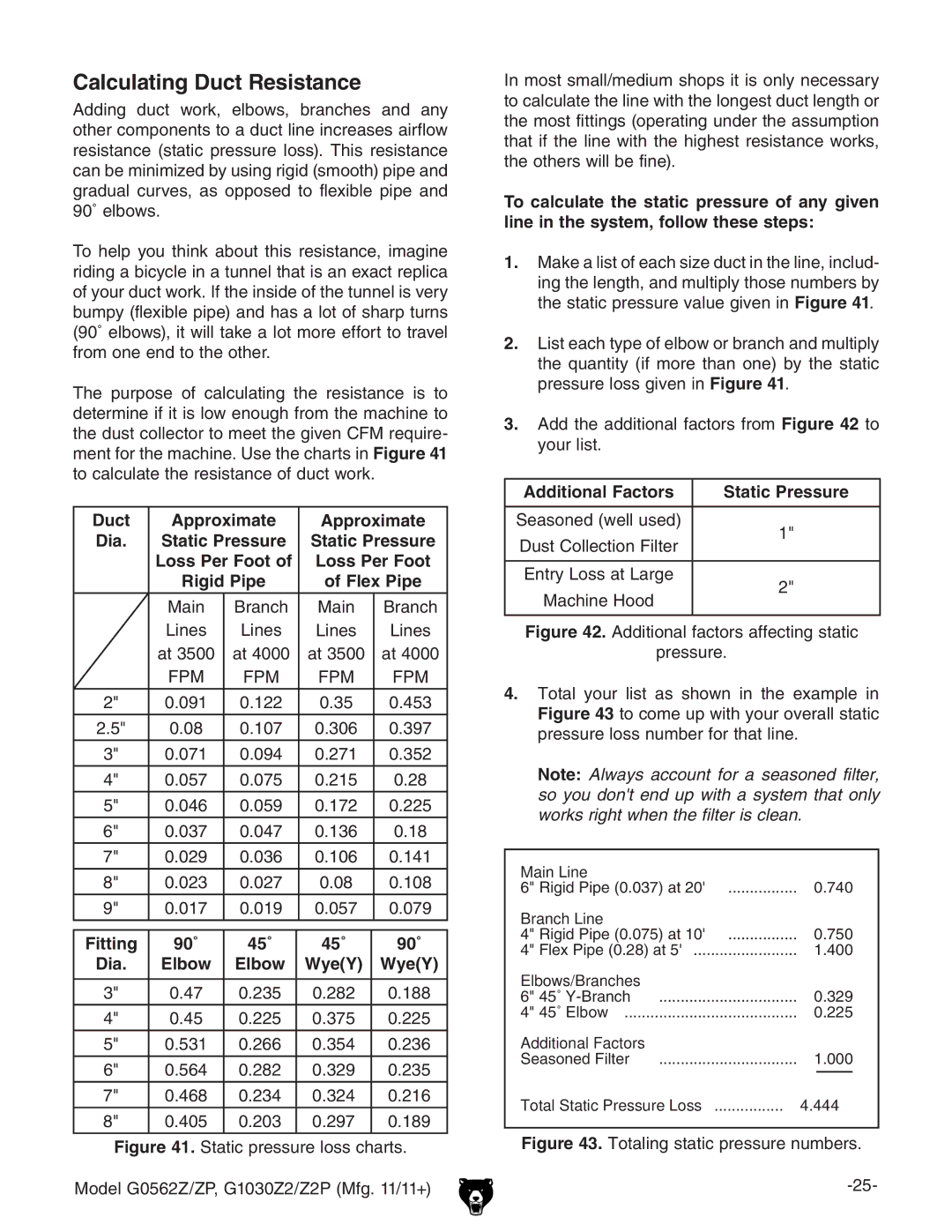G0562Z specifications
The Grizzly G1030Z2 and G0562Z are two remarkable dust collection systems designed for woodworkers and craftsmen who prioritize maintaining a clean and efficient working environment. These machines are pivotal in minimizing airborne dust and debris, contributing not only to a tidier workspace but also to improved health and safety standards.The Grizzly G1030Z2 is a powerful 3HP dust collector with a 2-stage cyclone system. Its two-stage design improves efficiency by separating larger particles from fine dust before reaching the filter bag. This not only prolongs the life of the filter but also enhances the overall suction power of the unit. With an airflow capacity of 1,200 CFM, the G1030Z2 is capable of handling multiple machines simultaneously, making it an ideal choice for serious woodworkers or small to medium-sized shops. It also features a large, 30-gallon collection bag, allowing for extended use before needing to be emptied.
On the other hand, the Grizzly G0562Z is a versatile and compact option that is perfect for small shops with limited space. This dust collector, also featuring a 2HP motor, offers a combination of powerful suction and a compact footprint. The 1,100 CFM airflow effectively captures dust from stationary machines. The G0562Z includes a convenient 5-micron felt filter bag that ensures even the finest particles are captured, offering an environmentally friendly solution to dust management. The design of this model includes wheeled casters for easier mobility around the workshop, providing convenience and flexibility for woodworkers performing various tasks.
Both models feature sturdy construction and easy-to-use systems for changing collection bags, ensuring minimal downtime in your workflow. Moreover, they boast noise-reducing technology, which is essential in settings where multiple machines operate simultaneously.
Overall, the Grizzly G1030Z2 and G0562Z embody the balance of innovation, efficiency, and functionality. They are engineered with the modern woodworker in mind, integrating advanced technologies that promote not only productivity but also safety, making them valuable assets in any woodworking shop. Through their high performance and reliability, these dust collection systems significantly contribute to a healthier workplace atmosphere.

